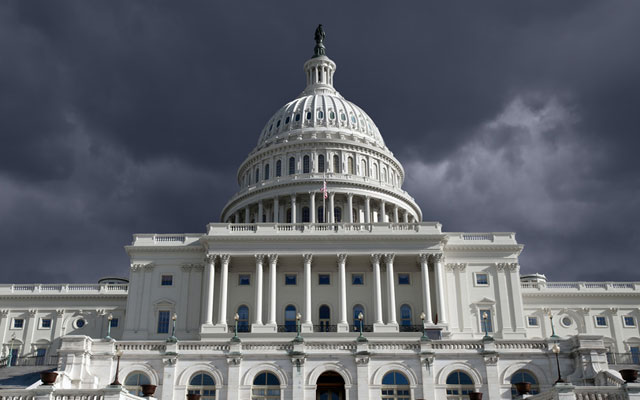Every year, the federal government discusses and votes on various budgets and legislation to determine federal spending for the upcoming fiscal year. A fiscal year is "an accounting period that spans 12 months." It begins on October 1st and runs through September 30th, and "funding for federal programs is provided on [this] fiscal year basis." It's important to understand how the federal government decides spending that affects citizens nation-wide, and it's impact on debt and inflation.
The Process of a Federal Budget & Setting a Fiscal Year
The process of completing a federal budget for a fiscal year is a lengthy one. It usually begins a year early with the White House Office of Management and Budget (OMB). Along with the President, OMB develops their budget proposal before sending it to Congress. The federal budget being decided on covers three areas:
- Discretionary Spending
- This spending goes towards federal agencies, and it's the area Congress sets.
- Mandatory Spending
- This spending is required by law and includes funding for Social Security, Medicare, and veterans benefits.
- Interest on the Debt
Once the proposal is submitted to Congress, the complex process truly begins. The first step does not follow the same schedule and can be done at any time. Congress must pass authorization bills, which "give agencies the legal authority to fund and operate their programs." The next step involves Congress passing a budget resolution, "an agreement between the House and Senate on a budget plan for the upcoming fiscal year, at least the following four fiscal years." Budget resolutions do have to be signed by the President, and they don't become actual law. This step also follows the fiscal year timeline, along with the following steps.
The next step is the most time consuming, and where most of a good portion of the work is done. Once the budget resolution is completed, the House Committee on Appropriations has the job to "fund the federal government's vital activities to keep the United States safe, strong, and moving forward." Within the committee, there are 12 subcommittees that correspond to different sectors of the government. Some of these subcommittees include Homeland Security, Energy and Water Development, and Commerce, Justice, Science, and Related Agencies. After the subcommittees conduct hearings in regard to each budget request from various agencies, the House and Senate vote on these bills. If they're passed, they are sent to the President for signature.
FY2023's Process So Far
In late March of 2022, President Biden and the OMB finalized his budget for the 2023 fiscal year. President Biden has stated that he is "committed to working with Congress to enact legislation that lowers costs for American families, expands the productive capacity of the American economy, and further reduces the deficit." He also mentions situations he has taken into account while creating the budget including COVID-19 and the Russia-Ukraine invasion.
A few of the requests made for the FY2023 include the following:
A few of the requests made for the FY2023 include the following:
- $28.5 billion for the Department of Agriculture
- $11.7 billion for the Department of Commerce
- $88.3 billion for the Departmnet of Education
- $48.2 billion for the Department of Energy
His entire budget proposal can be read here. The OSU Library also has a physical copy on the 5th floor. The budget resolution for FY2023 through FY2031 was completed on August 11, 2021 when it passed the Senate. With both of these steps completed, Congress is now working on the appropriation bills within their corresponding committees. The subcommittees have the job to markup and approve each bill before sending it to the full appropriation committee, and that is then sent to the House and Senate for voting.
The appropriation subcommittess have sent the following FY2023 bills to the full committee:
- Labor, Health and Human Services, Education, and Related Agencies Funding Bill
- Transportation, and Housing and Urban Development, and Related Agencies Funding Bill
- Commerce, Justice, Science and Related Agencies Funding Bill
- Interior, Environment, and Related Agencies Funding Bill
- Financial Services and General Government Funding Bill
The full committee have approved the following FY2023 bills and have been sent to be voted on:
- Financial Services and General Government Funding Bill
- Homeland Security Funding Bill
- Military Construction, Veterans Affairs, and Related Agencies Funding Bill
- Agriculture-Rural Development-FDA Funding Bill
- State, Foreign Operations, and Related Programs Funding Bill
- Legislative Branch Funding Bill
- Energy and Water Development, and Related Agencies Funding Bill
Another aspect of the House Appropriations Committee is that it "invites Members of Congress to request funding for projects in their communities." After submitting their requests, the committees will review them and fund a handful of them within the corresponding appropriation bills. Oklahoma Congress member's requests are below:
Inflation & Debt's Role
Another concept that has ties to each years' fiscal year is the national debt. How does the debt continue growing? It starts with government spending and federal revenue. Government spending is defined earlier in this post. Federal revenue is the amount of money the government collects from mostly taxes, among other things. When the amount of government spending is more than what it collects in revenue, a deficit occurs. In order to cover the deficit, the federal government borrows more funds, in turn, increasing the national debt.
The U.S. Government Accountability Office has a video explaining fiscal spending and health.
The Edmon Low Library has numerous resources regarding various fiscal years. It offers access to the following documents:
- Budget of the U.S. Government, Fiscal Year 2023, PREX 2.8: 2023 (5th floor Reference)
- The President's fiscal year 2023 budget: hearing before the Committee on the Budget
- NIPA Translation of the Fiscal Year 2023 Federal Budget
Other Resources
Read CBO's budget-related publications from a non-partison perspective.
Learn more about the federal deficit and debt from the Treasury Departmnent.
Read the White House's Press Release on the FY2023.
_________________________________________________________
Eager to know more? Start here.
Government Information Online is produced by the staff at the Oklahoma State University Libraries Government Documents Department, a regional depository for U.S. Government and Oklahoma state government documents. We are located on the 5th floor of the Edmon Low Library. Our department website can be reached at www.info.library.okstate.edu/government-documents. For more information or for research assistance, contact us at 405.744.6546. or email suzanne.reinman@okstate.edu.
.png)







Comments